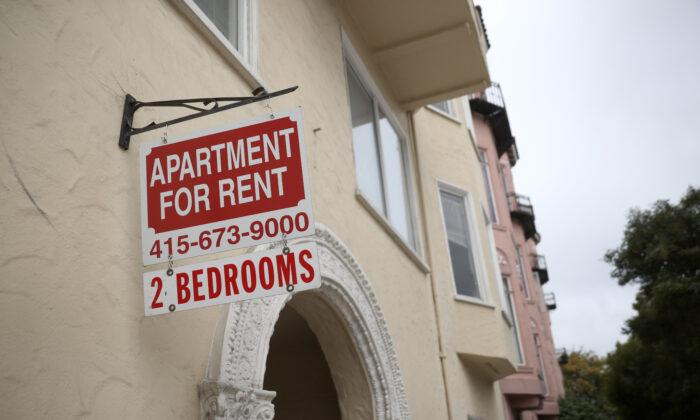Cash flow is the name of the game for landlords. Positive cash flow ensures your rental properties turn a profit, while negative cash flow indicates your investments are nothing more than financial drains. And while there are literally dozens of factors that influence cash flow—including the types of properties you invest in, the rates you set, and how you screen tenants—it ultimately comes down to your approach to rent collection.
The Importance of Rent Collection
Owning rental properties is expensive. Almost every transaction associated with owning a rental is classified as an expense. If you study the bank statements associated with your property, you’ll notice that 90 percent of transactions are debits from your account.This includes mortgage payments, property taxes, insurance, maintenance and repairs, utility payments, renovations, and upgrades. A property’s rent payment is its only consistent credit.
4 Methods for Collecting Rent
When it comes to collecting rent, there are several different options. Here are a few of the most common:This is one of the best (and most predictable) methods for collecting rent. With a direct deposit, automatic monthly withdrawals are taken from the tenant’s account and transferred to your account. This automates rent collection and makes it easy for both parties. It’s safe, secure, and efficient.
If you live far away from your tenants, you can ask them to mail you rent checks. The benefit of collecting rent checks via mail is that it’s free (you don’t have to pay for any sort of software or service). The downside is that it’s very unreliable and depends on the tenant to remember to mail a check on time each month.
While not exactly ideal, you can do face-to-face rent collection. If you own a multi-family rental property, like an apartment or four-plex, you may provide a designated drop-off location on the premises. If it’s a single-family rental, you can encourage them to drop it off at your office. (Or, if it’s convenient, you can pick it up each month.) As you can probably guess, in-person rent collection is usually more of a hassle than it’s worth.
7 Tips for Collecting Rent On Time
Now that we understand why rent collection matters and which basic methods exist, let’s drill down and focus on the how of this process. In other words, how do you make sure you get paid each month without the hassle of late payments and excuses? Let’s take a look together.Tenant screening might not seem like it has anything to do with rent collection, but don’t be fooled. It’s one of the first (and most important) steps you can take toward getting paid on time.
If you don’t already have a thorough tenant screening process, now is the time to create one. And rather than just asking the same basic questions that most landlords do, use the screening process to really dig into a prospective renter’s financial viability. In other words, gather as much information as you legally can to ensure an incoming tenant is reasonably able to afford the rent payment each month.
Another rule of thumb is the “3X Rule.” This simple method takes the rent you’re charging and multiplies it by three. The tenant’s monthly income should be equal to or greater than this number. For example, if the rent is $2,000 per month, they should bring in at least $6,000 in monthly income ($2,000 * 3 = $6,000).
These are just rules of thumb, but they’re helpful. If nothing else, they help you quickly identify any red flags. (For example, if you’re charging $2,000 per month but the applicant only brings home $4,000 per month, you’ll know it’s not a good fit.)
What does tenant screening have to do with rent collection, you might be wondering? Well, everything. By thoroughly screening on the front end and ensuring reasonable affordability, you cut down on the risk that a tenant is unable to pay on time because of financial troubles.
We’re going to mention quite a few tips and best practices in this guide, but the truth is you don’t have to do any of them yourself. Many landlords shortcut all of this by simply hiring a property manager to handle rent collection (and other tasks) on their behalf.
Property management companies specialize in partnering with landlords and real estate investors to watch over their properties and manage them as if they were their own. This may include tenant screening, maintenance and repair coordination, accounting, and, yes, rent collection. And depending on the property manager you go with, they can essentially remove all of the risk associated with getting paid.
While not every property manager offers a rental income guarantee quite this strong, there are still distinct advantages of working with one. If nothing else, it takes the burden of tracking down rent payments off your shoulders.
Rent collection software has become quite popular over the past few years. It’s something that both landlords and tenants find advantageous (for numerous reasons).
One of the biggest advantages of using rent collection software is that it allows for real-time payments from anywhere. In other words, there’s no delay between when the tenant makes the payment and when it shows up in your account. Unlike mailing a rent check, which can take several days to arrive and another day or two to clear, online rent payments are immediate.
Another perk of using software is that it makes it easy to manage all of the ancillary aspects of rent collection, including calculating late fees, sending reminders, showing a tenant’s payment status, etc.
Speaking of reminders, make sure you’re communicating clearly and often with your tenants ahead of rent due dates. Never assume that they will remember on their own.
The great thing about reminders is that they’re pretty easy to automate. The easiest option is to use built-in features with a rent collection software or service. However, even if you collect rent manually, you can still use reminders.
To make things easy, keep a template on your phone’s notepad and set a reminder for three days before the rent is due. When this reminder goes off, copy and paste the template into an SMS and send it to each tenant.
Sometimes tenants need a little added motivation to pay on time. One way to do this is by offering incentives and penalties.
One of the most common incentives is to offer a discount for paying rent in full before the due date. For example, if rent is due by the fifth of each month, you may offer a $25 to $50 discount for anyone who pays by the first of each month. (Can’t afford to knock $50 off the price? Freebies like t-shirts, hats, snacks, and vouchers can work, too. They might only cost you a few bucks, but they can convince someone to move your payment to the top of their stack of bills.)
Sometimes motivation can work better in reverse. In other words, you can penalize people for failing to pay rent on time. If you do have penalties, make sure you include them in the lease agreement. You’ll also need to stay within the legal boundaries of rental laws in your state.
As mentioned above, collecting rent via mail is technically an option. However, it’s highly discouraged in this day and age. The United States Postal Service (USPS) has always been pretty unreliable, but it is now more so than ever.
In order to successfully deposit a rent check from the mail, a lot has to go right. First off, the tenant has to remember that rent is due. Then they have to physically write a check, stick it in an envelope, and place it in the mail. (If they don’t have a stamp, which is highly likely, they have to remember to go to the store and buy stamps.) Once the letter is handed off to USPS, the letter has to work its way through the system. Depending on how far the check is being mailed, it could take anywhere from two days to a week to arrive. Once the check arrives, you have to sign the check and deposit it in your bank account (which can take another day or two to clear).
While you can certainly collect rent via mail if you’d like to, there are so many superior options. Avoid this method if at all possible. (It’ll make your life much easier.)
Don’t underestimate the power of stopping by in person to remind a tenant about their rent payment. While there are laws that prevent you from entering the property unannounced, there’s nothing stopping you from knocking on the door.
Adding it All Up
If you can consistently collect rent on time and in full, it’ll have a profoundly positive impact on your rental property cash flow. Ultimately, it’ll become one of the most important driving factors in your success.As you can see from this article, there’s a lot that goes into rent collection. It’s not as easy as having someone sign a lease agreement and promise to drop off a check in your mailbox each month. There are processes, steps, and systems you must put in place to protect your cash flow. Use this guide to get started.






